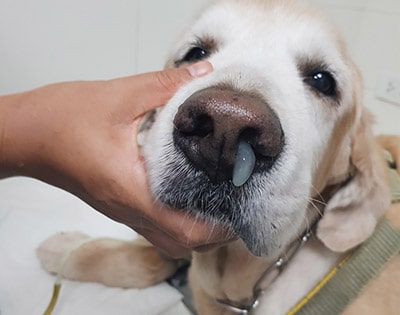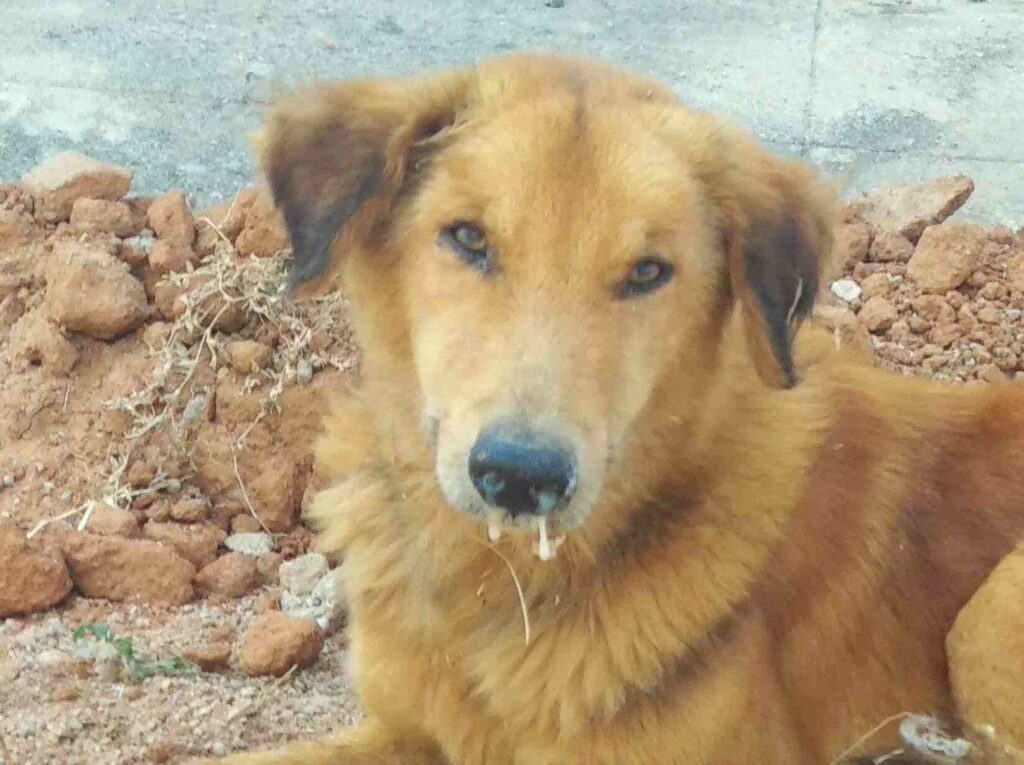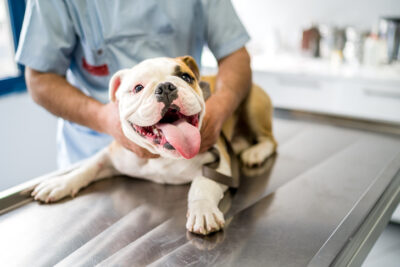Distemper in dogs is a serious but preventable viral disease that affects a dog’s respiratory, digestive, and nervous systems.
Distemper in dogs is a highly contagious and often fatal viral disease caused by the canine distemper virus. It affects the respiratory, digestive, and nervous systems, leading to coughing, fever, and eye discharge. Vaccination prevents infection.
Let’s uncover everything you need to know about this disease—how it spreads, how to treat it, and most importantly, how to prevent it.
Canine distemper is a highly contagious and potentially fatal viral disease that affects dogs and certain wild animals, including foxes, raccoons, and coyotes. It’s caused by the canine distemper virus (CDV)—a close relative of the measles virus in humans.
This disease primarily affects a dog’s respiratory, gastrointestinal, and nervous systems, resulting in a wide range of symptoms. Puppies and unvaccinated dogs are at the highest risk, as their immune systems are not yet fully developed.
Fortunately, distemper is preventable through regular vaccination, which has dramatically reduced its spread in many countries. However, outbreaks can still occur in areas with low vaccination rates, making awareness and prevention critical.

Distemper symptoms can vary from mild to severe and often appear in stages. In the early phase, it may look like a common cold or flu, but as it progresses, it can become life-threatening.
Here are the most common signs of distemper in dogs:
- Fever and loss of energy
- Watery or thick yellow-green eye discharge
- Nasal discharge and constant sneezing
- Coughing and labored breathing
- Vomiting and diarrhea, leading to dehydration
- Loss of appetite and weight loss
As the virus spreads to the nervous system, more serious symptoms can appear, such as:
- Twitching or tremors (especially in the face or legs)
- Seizures or convulsions
- Difficulty walking or paralysis
- Jaw movements that look like chewing gum
Dogs showing neurological signs need immediate veterinary care. Even after recovery, some dogs may continue to have lasting effects like muscle twitches or coordination problems.
Also Read: Can Dogs Eat Raisins?: How to Act Fast and Save Their Life
The canine distemper virus (CDV) spreads primarily through airborne exposure—that means when an infected dog coughs or sneezes, the virus can travel through the air and infect nearby dogs.
Other ways the virus spreads include:
- Direct contact with saliva, urine, vomit, or blood from an infected animal
- Sharing food or water bowls
- Contaminated bedding or toys
- Contact with wildlife, such as raccoons or skunks, which can carry the virus
Distemper is not spread to humans, but it can affect ferrets and some wild animals. Because the virus is fragile outside the host, it doesn’t survive long in the environment—but dogs that recover may continue to shed the virus for several months, putting others at risk.
Unvaccinated puppies are particularly vulnerable because their immune systems are not yet strong enough to fight the virus.
Diagnosing distemper can be challenging since its symptoms mimic other diseases like kennel cough or parvovirus. That’s why veterinary expertise is essential.
Here’s how vets confirm distemper:
- Physical Examination: The vet looks for common signs such as eye/nose discharge, fever, dehydration, and neurological changes.
- Medical History: The vet asks about vaccination records and recent exposure to other animals.
- Laboratory Tests:
- PCR testing detects the virus in samples like blood, urine, or nasal discharge.
- Antibody testing checks for the body’s immune response to the virus.
- Imaging & Additional Tests: If neurological symptoms are present, imaging (like MRI) might be used to assess brain and spinal cord damage.
Accurate diagnosis ensures the dog gets the right treatment early, improving the chances of recovery.

Unfortunately, there’s no direct cure for canine distemper. However, supportive treatment helps the dog’s immune system fight the virus while easing symptoms.
Here’s what treatment may include:
- 💧 Fluid therapy (IV fluids): Prevents dehydration caused by vomiting and diarrhea.
- 💊 Medications: To control vomiting, diarrhea, and seizures.
- 🧫 Antibiotics: Used to prevent or treat secondary bacterial infections.
- 🫁 Oxygen therapy: For dogs with pneumonia or breathing problems.
- 🧠 Anti-seizure medication: Helps manage tremors and seizures caused by the virus.
In severe cases where the disease has caused irreversible neurological damage, humane euthanasia may be discussed to prevent suffering.
Early treatment is the key to survival. With strong immune support and good nursing care, some dogs do recover and go on to live happy lives.
Dogs that survive distemper may face a long recovery process. Even after symptoms disappear, they can remain contagious for weeks to months, so isolation from other pets is critical.
Here’s how to manage a dog recovering from distemper:
- Keep the dog isolated until your vet confirms they are no longer contagious.
- Provide a calm, quiet environment to reduce stress.
- Feed a nutritious diet to rebuild strength.
- Stay hydrated with plenty of fresh water or vet-recommended fluids.
- Follow-up checkups are vital to track neurological and immune health.
Some dogs may experience long-term issues such as recurring seizures or muscle twitches, known as chorea. However, with loving care and veterinary guidance, many dogs can lead a good quality of life post-recovery.
Must Read: Can Dogs Eat Takis? – Every Pet Owner Should Must Know!
The best way to protect your dog from this devastating disease is vaccination. The distemper vaccine is part of the core vaccines that every dog should receive.
Here’s how prevention works:
- Puppy Vaccination Schedule:
- First dose at 6–8 weeks of age
- Booster shots every 3–4 weeks until 16 weeks old
- Then, boosters at 1 year, followed by every 1–3 years as recommended by your vet
- Avoid exposure: Keep unvaccinated puppies away from unknown dogs or wildlife.
- Disinfection: Regularly clean your dog’s bowls, toys, and bedding.
- Veterinary checkups: Regular visits help ensure vaccinations are current and your dog’s health stays in top condition.
By keeping your dog vaccinated, you’re not only protecting your pet—but also helping to stop community-wide outbreaks.
Most dogs handle vaccines very well, but mild reactions can occur. These side effects are typically short-term and harmless:
- Slight soreness or swelling at the injection site
- Mild fever or tiredness for a day or two
- Small loss of appetite
Rarely, a dog might experience an allergic reaction such as facial swelling, vomiting, or breathing difficulty. If that happens, contact your vet immediately.
Despite these mild side effects, the benefits of vaccination far outweigh the risks. It’s a simple and safe way to give your dog lifelong protection against one of the most dangerous canine diseases.
At home, focus on keeping your dog warm, comfortable, and hydrated. Offer soft foods, plenty of water, and rest. Clean up any discharge and follow your vet’s advice carefully. Never replace medical care with home remedies.

Early signs include watery eyes, nasal discharge, fever, coughing, tiredness, and loss of appetite. Your dog might seem sad or weak. These symptoms can look like a cold, so it’s important to visit your vet quickly for testing.
A recovering dog starts eating, drinking, and playing more. Coughing, discharge, and fever slowly improve.
However, mild twitching or weakness may remain for some time. Always follow your vet’s advice to confirm full recovery and prevent spreading the virus.
You Should Know: Can Cytopoint Cause Seizures In Dogs – A Complete Guide!
Distemper can be deadly within two to four weeks, especially in young or unvaccinated dogs. The timing depends on the dog’s immune strength and how soon treatment begins. Quick veterinary care gives the best chance of survival and recovery.
Take your dog to an emergency clinic if they have seizures, trouble breathing, high fever, or stop eating and drinking suddenly.
Yes, both can get distemper. Puppies and unvaccinated older dogs are at higher risk because their immune systems are weaker or unprotected.
Yes, if your dog has distemper, keep other pets away. The virus spreads through air, saliva, and shared bowls or bedding.
Early signs include watery eyes, nasal discharge, coughing, fever, and tiredness. Your dog may seem weak and stop eating normally.
Yes, some dogs recover with strong care and early treatment, but others may have lasting nerve issues or weakness afterward.
No, humans cannot catch distemper. The virus primarily affects dogs and some wild animals, including raccoons, foxes, and ferrets.
It’s rare but possible if vaccines aren’t up to date. Regular boosters help maintain your dog’s strong and reliable protection.
Dogs contract distemper by inhaling virus droplets from the coughing, sneezing, or sharing food, water, or toys with infected animals.
Distemper can resemble kennel cough, pneumonia, or parvovirus because its symptoms, such as coughing, fever, and vomiting, are similar.
Vets check through symptoms, history, and lab tests like PCR or blood samples to confirm the virus in your dog’s body.
Canine distemper is one of the most serious and heartbreaking illnesses a dog can face — but the good news is, it’s also one of the most preventable. With proper vaccination, regular vet checkups, and early awareness of symptoms, you can protect your furry friend from this dangerous virus.
Always remember: early action saves lives. If your dog shows signs like coughing, eye discharge, fever, or seizures, seek veterinary care immediately. Quick diagnosis and supportive treatment greatly improve recovery chances.
While distemper can leave lasting effects in some dogs, many make a full recovery with love, patience, and professional care. Prevention through vaccination remains the strongest defense — keeping your dog safe, healthy, and ready to enjoy a long, happy life by your side.
In short: Stay vigilant, stay informed, and stay committed to your dog’s health — because every vaccine, every vet visit, and every moment of care matters.
